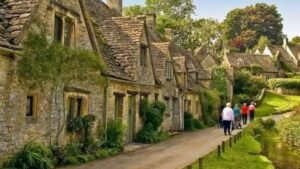The Uninhabitable Island: A Territory Where Human Life Cannot Survive

Off the coast of , about 30 kilometers from São Paulo, there is a place so deadly that access to it has been prohibited. This is Queimada Grande, an island of approximately 430,000 square meters that, at first glance, may seem like a paradisiacal natural refuge. However, inside it harbors a silent and deadly danger.
During the 20th century, there was a person in charge of maintaining the lighthouse on the island, but over time it was automated and the island was completely uninhabited. The reason is simple: its territory is dominated by thousands of , making it a place where human life cannot even survive for 30 seconds.
A kingdom of venomous snakes

Queimada Grande is also known as Snake Island, and not by chance. It is estimated that approximately 15,000 snakes inhabit this , making it the place with the highest density of vipers per square meter in the world. Among these, the feared Bothrops insularis stands out, known as the golden lancehead snake, one of the most venomous species in the world.
Despite its relatively modest size, rarely exceeding 1.2 meters in length, this snake is extremely aggressive and has a . Its diet is mainly based on birds and reptiles, but when food is scarce, they can even resort to cannibalism and devour each other. Its geographical isolation has led to a particular evolution that makes them even deadlier than other snakes in the same family.
A venom without antidote and quick death
The venom of the golden lancehead snake is up to five times more potent than that of its close relative, the Bothrops jararacá, and its effects are annihilating. According to studies, a bite can cause muscle necrosis, brain hemorrhage, severe vomiting, and intestinal bleeding.
The speed at which the venom acts makes it impossible to apply an antidote or receive medical assistance in time. It is estimated that a person bitten on the island would only survive about 30 seconds before succumbing to the effects of the venom. This reality has turned Queimada Grande into a completely off-limits .
A natural laboratory reserved for science
Due to its extraordinary biodiversity and scientific interest, the island was declared in the 1980s as an area of high ecological value and herpetological interest. This means that access is restricted exclusively to researchers and specialized scientists, who must obtain special permits from the Brazilian government to visit.
Research on Queimada Grande has allowed the study of the evolutionary behavior of the golden lancehead snake and the development of its venom, in order to seek medical applications. However, the rules for its exploration are strict: altering the ecosystem or extracting samples without approved scientific justification is not allowed.
A territory that challenges human survival
In conclusion, Queimada Grande is one of the most dangerous places on the planet. Its high concentration of venomous snakes and the lethality of its venom make human presence impossible in this territory. It is not surprising that it has been forbidden for any type of activity . This small corner of Brazil remains a fascinating and deadly mystery, accessible only to those willing to challenge its dangers in the name of science.







